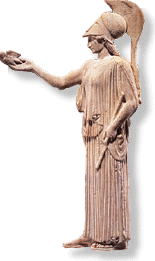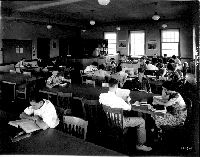
The official date for the founding of the UofL Libraries is 1837. It was at that time the Louisville Medical Institute began offering classes and it was known to have a library consisting of around 1,200 volumes. Although the University of Louisville traces its founding to the chartering of the Jefferson Seminary in 1798, there is no record of a library at that time nor in 1816 when the seminary actually was organized and began offering classes. The Medical Institute became the Medical Department of the University of Louisville in 1846 by which time its collection had grown to over 3,000 volumes. In 1856, the building of the University Medical College burned to the ground. (It is recorded that the students saved many of the library's books from the fire by throwing them into the dean's cow lot.) As the Medical College grew, books and journals were consistently added to its library. By 1937 the collection numbered over 25,000 volumes and there was one full-time librarian aided by a student assistant who worked only on Saturdays.
The next library to be developed by the University was that of the Academic Department (now the College of Arts and Sciences) founded in 1907. Initially there was no library to support the Academic Department but soon after its founding Dean John Letcher Patterson contributed books from his personal library to form the department's first library. By 1912, the library had grown to 2,000 volumes. During this period and for many years thereafter students depended on the Louisville Free Public Library (composed of nearly 200,000 volumes) for most of their study and research. By 1928 and the move to the present Belknap Campus, the General Library had grown to over 7,000 volumes and was staffed by a full-time librarian.
It was not until 1926 that the Law School had a library of its own. By 1929 its collections had grown to 3,500 volumes. Prior to and for sometime afterward, the Law School had contracted with the Louisville Law Library (a private library) to supply the needs of the University's law students. By 1939, the Law Library had moved to the second floor of the then new School of Law building on Belknap campus. Its collection had grown to 19,000 volumes in 1934 and by that time employed a full-time librarian.
The Dental School's library probably had its beginning in 1887 as a part of the Louisville College of Dentistry, a school that was not part of the University of Louisville. By 1918, the Louisville College of Dentistry was transferred to the University of Louisville, occupying quarters at the corner of Brook and Broadway. At that time, the dental library occupied a small room near the dean's office and was composed of approximately 500 volumes. By 1927, the dental library contained 859 bound volumes and was staffed by a librarian. By 1952, the dental library had grown to 4,200 books and bound journals and 150 current periodicals.
The Speed Scientific School, along with its library, was established in 1924 and was located in Brigman Hall. For a number of years, the Speed School Collection was composed entirely of gifts solicited by the dean. In 1927, the library contained 1475 volumes and 33 periodicals. The dean's secretary served as librarian. By 1939, the library had grown to 4,000 volumes.
In 1929, UofL established a Department of Music (later to become the School of Music). The Music Library had its beginnings as a part of the General Library which, by 1929, was located in the north wing of the Administrative Building. Although many music books were in the collection of the General Library, the Music Library contained many music scores and a sizeable collection of phonograph records. By 1947, the School of Music had moved to Garden Court, the new home of the School of Music. At that time, a full-time librarian was placed in charge of the Music Library. The Music Library contained collections of books and journals as well as music scores, although many books related to Music History remained in the General Library on Belknap Campus.
The Louisville Municipal College for Negroes began classes in 1931 and had a library from its very beginning. By 1934, the library had over 5,000 volumes and was managed by a professional librarian. In 1951, the Municipal College was abolished and the student body was integrated with students on Belknap Campus. The collections of the Municipal College Library were absorbed into the General Library on Belknap Campus, duplicate copies being sold to students and faculty for 25¢ per volume.
In the mid 1940s, an Art Library was formed and was housed in a portion of the south wing of the Administration Building. The formation of the Art Library was made possible by funding from the Allen R. Hite bequest to the University's Fine Arts Department. Several years after the University Library building had been occupied, the Art Library was moved to a portion of the lower level south wing of that building where it remained until 1981 when it moved to its present quarters on the main floor of Schneider Hall. The move of the General Library to the new Ekstrom Library in 1981 allowed Schneider Hall to be converted to quarters for the Fine Arts Department.
The next library to be added to UofL's growing system was the Natural Sciences Library. This library was created as part of a new Natural Sciences Building that was constructed in the mid 1950s. This library brought about a significant improvement in services to the students and faculty of the Natural Sciences by combining into a single collection the books and periodicals that had been housed in the departments of Biology, Chemistry and Physics, in addition to the many science books in the General Library.
The final library to be added to the University Libraries system was on the Shelby Campus and was known as the College Library. That library, along with the entire Shelby Campus, had previously formed Kentucky Southern College, a private church-affiliated school, that became defunct and was absorbed into the University of Louisville in the late 1960s. By the early 1980s, the School of Music and the College of Arts and Sciences Freshman Symposium had moved to Belknap Campus. Hereafter, the programs offered on the Shelby Campus did not require a general library and the College Library was closed. Its collection was sold to a new church- affiliated college that was being formed elsewhere in the state.
During the early period in UofL Libraries' history, a particularly momentous event occurred in 1929 when the head of the General Library, Evelyn J. Schneider, was made University Librarian. This resulted in the classification and cataloging of all the collections of the many libraries throughout the University, each with its own card catalog and with the General Library's card catalog expanding to form a union catalog of all the holdings in the University Libraries. Prior to that time, students were forced to wander from one departmental collection to another in search of books on various subjects outside the purview of the General Library. This consolidation of administration also brought about the ordering and standard cataloging of books and journals by the General Library for nearly all of the separate libraries. Consistent binding of journals in all of the University Libraries was introduced at this time. Although under this administrative arrangement the heads of the professional school libraries reported directly to the deans of the various schools, the University Librarian served as the chief spokeswoman for the University Library system and represented to the President of the University (to whom she reported) the needs of the individual libraries.
 The influx of students, under the G.I. Bill, following WW II placed a particular strain on the UofL
libraries and during that time collections of books and journals expanded significantly in most of the libraries. By 1956, the General
Library had grown to over 125,000 volumes and despite having taken over the majority of space in the administration building still
lacked space for further expansion. Dramatic measures were taken to meet the need, including building shelf ranges up to 15 - 18
feet high in the eight to ten rooms reserved for book stacks. Reader space was so limited that there were times when students had
to sit on the floor. The University's President and Board of Trustees recognized the urgency of this situation and began making plans
for expansion of the library. The first idea for expansion was to convert the entire Administration Building into a library. This would have entailed renovating the existing building and constructing large three-story wings on the north and south sides of the building. This plan was soon abandoned, at the strong urging of University Librarian, as being impractical and nearly equal in expense to building a new library. It was decided that a new library would be built; through the efforts of local officials a bond issue was submitted to the city and county voters to supply funds to build the new library (along with renovation of all the old buildings on Belknap Campus and construction of a new Police Department at 7th and Jefferson Streets). Voters approved the bond issue by a large margin. By 1956, the new University Library had been built and collections and services moved to the new facility (now Schneider Hall, home of the Art Library and the Fine Arts Department of the College of Arts and Sciences). The influx of students, under the G.I. Bill, following WW II placed a particular strain on the UofL
libraries and during that time collections of books and journals expanded significantly in most of the libraries. By 1956, the General
Library had grown to over 125,000 volumes and despite having taken over the majority of space in the administration building still
lacked space for further expansion. Dramatic measures were taken to meet the need, including building shelf ranges up to 15 - 18
feet high in the eight to ten rooms reserved for book stacks. Reader space was so limited that there were times when students had
to sit on the floor. The University's President and Board of Trustees recognized the urgency of this situation and began making plans
for expansion of the library. The first idea for expansion was to convert the entire Administration Building into a library. This would have entailed renovating the existing building and constructing large three-story wings on the north and south sides of the building. This plan was soon abandoned, at the strong urging of University Librarian, as being impractical and nearly equal in expense to building a new library. It was decided that a new library would be built; through the efforts of local officials a bond issue was submitted to the city and county voters to supply funds to build the new library (along with renovation of all the old buildings on Belknap Campus and construction of a new Police Department at 7th and Jefferson Streets). Voters approved the bond issue by a large margin. By 1956, the new University Library had been built and collections and services moved to the new facility (now Schneider Hall, home of the Art Library and the Fine Arts Department of the College of Arts and Sciences).
Part 2, covering the years 1956-1996, will be published in the June, 1998 issue of The Owl — the Co-editors
|
![]()